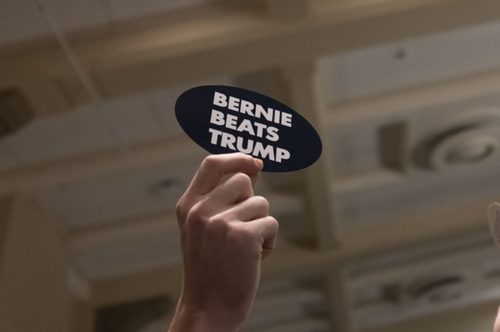In both 2016 and 2020, the Democratic Socialists of America (DSA) went all-in on Bernie Sanders. It did so for strategic reasons. In particular, a theory drives these decisions: endorse Sanders, identify with the Bernie brand, and then gain new members from Bernie association. Maybe it doesn’t announce such things that explicitly (though it kinda does), but anyone familiar with DSA knows this was the basic idea.
Sanders lost in both 2016 and 2020. But in each case, the DSA grew enormously.
And so, in one sense, the DSA wildly succeeded. It started as a marginal organization of a few thousand mostly older leftists. It emerged as the largest U.S. socialist organization in a century, boasting around 100,000 members. Along the way, it transformed itself from a minor, largely irrelevant discussion group to a (arguably even the) major player in US leftist politics. Furthermore, the DSA grew not only in membership, but also in ideology. It grew not by tacking to the center, but rather by moving to the left. At both its 2017 and 2019 conventions, its new, younger member base pushed the org to the left.
What if, though, Sanders had won in either 2016 or 2020? What if he were president right now? In that scenario, what would the DSA look like?
Let’s take a look. I think this exercise reveals both opportunities and weaknesses in the DSA’s political model.
More DSA Members and Campaigns
First, we can find some obvious strengths in the DSA strategy. For one, there’s the membership growth. And the growth is real. The DSA took itself from marginal to central in only a few years. Plenty of leftist organizations would love to do the same.
And the DSA isn’t just growing for growing’s sake, like much of the tech industry. It has hired more staff, started more campaigns, and won more elections. On the electoral front, it has four current members in Congress. At the state and local level, its members hold about four dozen seats in state legislatures and many more city council seats.
Local DSA chapters have founded tenants unions and solidarity networks, carried out mutual aid projects, and partnered with local unions and workers’ organizations on a wide range of ideas. More than anything, the DSA has provided ideas and space for thousands of people not previously involved to get things done.
Had Sanders won, all these things probably would’ve greatly expanded in at least the short term. A Bernie presidency would’ve brought far more attention, members, and campaigns of all kinds.
Weaknesses in the DSA Model
However, I think this little exercise reveals a few weaknesses in the DSA growth model.
First, it would’ve been extremely difficult for the DSA to act as a check on Bernie. Given that much of its member base came to the DSA by way of the Bernie campaign, and the fact that Bernie is much better known than the DSA, there’s a huge risk the DSA – even at the rank-and-file level – would’ve functioned as a pro-Bernie vehicle that moved to the right as Bernie inevitably would have as President. Furthermore, media outlets like Jacobin that also used the Bernie business model would’ve been at risk of fully degenerating into pro-Bernie propaganda vehicles over and above socialist vehicles.
Second, the DSA has long had trouble integrating its new members into local chapters. Getting members largely from a presidential campaign rather than local organizing exacerbates this. Lots of people join, pay membership dues for awhile, and then allow their membership to lapse. Or they keep paying, but never become involved beyond sending monthly or annual membership dues.
To its credit, the DSA spends a lot of staff time and energy trying to solve this problem. It employs regional field organizers and offers a ton of resources to local chapters. But the problem stubbornly remains.
Third, in some ways, the DSA is probably less diverse because of its member base in the Bernie campaign. Sanders didn’t attract a particularly diverse voter base in 2016. On the other hand, he did in 2020. In that race, he probably had the most diverse coalition of any Democratic candidate. But the DSA doesn’t necessarily attract the most diverse set of members of the Sanders coalition. Of course, things could be worse. The DSA is one of the most diverse sectarian leftist groups. But things could also be much better.
DSA’s Challenges
Of course, Bernie didn’t win. And so, the election didn’t expose these weaknesses. At least, it didn’t expose them in quite the ways it could have.
At the same time, the DSA didn’t achieve some of the strengths it could have. For better or worse, the DSA moves on in a different environment. But while it missed some benefits from a Bernie presidency, it also dodged at least a few bullets.
